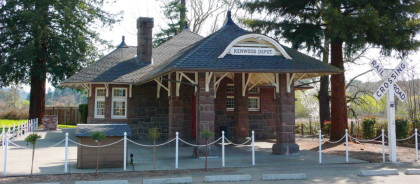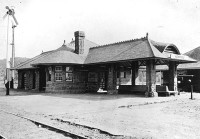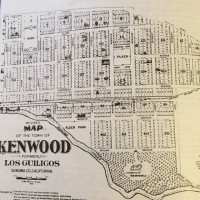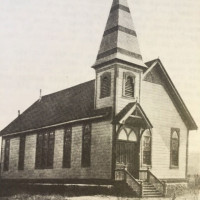The view from Up Valley
 By Linda Hale — Folks driving up our Valley on Highway 12 eventually pass through Kenwood with its cute shops, restaurants, and lots of tasting rooms. They may also get a glimpse of cottages and Victorian houses that make up what Kenwoodians call The Village. Kenwood has a Post Office, a local market, and a world-famous fire department. And we also have a solid sense of community that began with the old railroad depot that still exists and now houses the Kenwood Community Club.
By Linda Hale — Folks driving up our Valley on Highway 12 eventually pass through Kenwood with its cute shops, restaurants, and lots of tasting rooms. They may also get a glimpse of cottages and Victorian houses that make up what Kenwoodians call The Village. Kenwood has a Post Office, a local market, and a world-famous fire department. And we also have a solid sense of community that began with the old railroad depot that still exists and now houses the Kenwood Community Club.
The concept of “community” derives from the Latin communis or things held in common. In the thousands of years the Yuki Indian tribes inhabited the Kenwood area, they held the land, the water, and the hot springs in common. Kenwood was mainly marsh and wetlands when the Yuki inhabited their Wilikos (Guilicos) village at the head of Sonoma Creek. According to historians Marian Britton and Dallyce “Dee” Sand of Kenwood, when fields were later plowed by settlers in the springtime along Sonoma Creek, arrowheads, and grinding bowls were uncovered with “the most interesting ones found along the creek where the warm springs erupted from the ground.” Today Morton’s Warm Springs awaits tourists and locals on Warm Springs Road and Deerfield Winery holds title to the last small wetland left in Kenwood.
 If you drive around in Kenwood today, you can see a bit of that history in the few lots for sale. They are overgrown with willows, oaks, and blackberries that call to mind the great swamps that once covered the Valley floor. This land was going to need taming and it was going to take two Scotsmen to do it. A Scottish sea captain named John Wilson sailed into Bodega Bay in 1837, promptly fell in love with Ramon Carrillo, Vallejo’s sister-in-law, and changed his name to Juan so that he could become a Mexican citizen and apply for a land grant. It became the Los Guilicos land grant, but the grantee was soon foiled by the raising of the Bear Flag and the reluctance of the U.S. Government to recognize the grant.
If you drive around in Kenwood today, you can see a bit of that history in the few lots for sale. They are overgrown with willows, oaks, and blackberries that call to mind the great swamps that once covered the Valley floor. This land was going to need taming and it was going to take two Scotsmen to do it. A Scottish sea captain named John Wilson sailed into Bodega Bay in 1837, promptly fell in love with Ramon Carrillo, Vallejo’s sister-in-law, and changed his name to Juan so that he could become a Mexican citizen and apply for a land grant. It became the Los Guilicos land grant, but the grantee was soon foiled by the raising of the Bear Flag and the reluctance of the U.S. Government to recognize the grant.
According to the 100 year edition of “Kenwood Yesterday and Today,” Juan Wilson sold the entire 18,833 acres to William Hood and William Pettit for $13,000 in 1850. Pettit lived in San Francisco and the land became a rancho for Hood. But the Hoods had borrowed money against what remained of the land grant to build a winery and a distillery, and the estate was foreclosed on by 1896.
The area where Kenwood is today remained a swamp until parcels from the original Hood grant were sold off. In 1877 a large parcel was sold to agents of a bank who had formed the Sonoma County Land and Improvement Co. N.W. Griswold, an agent of said bank, became the president of this new company. And Kenwood was born. Griswold found out that the railroad would be coming through and he and his partners formed another company to survey the land. They laid out a model town with a plaza, park, hotel, two churches, and home sites for themselves. The town lay on the railroad line, and the stone depot that still stands was built by the Southern Pacific Railroad. Luckily for all of them, farmers had used horses and plows to dredge the creek bed (a big development no-no today) and redwood flumes were constructed along each street. A boom ensued while the area shipped redwood, food, and building stones to San Francisco.
The name of the town was changed from Los Guilicos South to Rohrerville to Kenwood to honor the famous Kenwood Mansion in England, some say. The boom ended and Kenwood became a tourist destination for its hot springs and country atmosphere. Hotels and boarding houses sprang up for visitors that arrived by train on the weekends, but cows roamed the empty streets and fences put up by absentee neighbors blocked roads to traffic during the week.
 Fast forward to the 1950s when Sonoma had one traffic light and the rest was abandoned fields two miles out from the plaza. It was horse country and the countryside around Kenwood remained unfenced with open fields everywhere. It’s what drew my husband and me out here. We also bought one of the many vacation cabins that were built in Kenwood as weekend escapes from the City, but later abandoned when gas prices went up. It had no insulation, the pipes were rotted, the barbed wire fences lay on the ground, and it was at the end of an unpaved dirt road. And, of course, we ran out of water right away.
Fast forward to the 1950s when Sonoma had one traffic light and the rest was abandoned fields two miles out from the plaza. It was horse country and the countryside around Kenwood remained unfenced with open fields everywhere. It’s what drew my husband and me out here. We also bought one of the many vacation cabins that were built in Kenwood as weekend escapes from the City, but later abandoned when gas prices went up. It had no insulation, the pipes were rotted, the barbed wire fences lay on the ground, and it was at the end of an unpaved dirt road. And, of course, we ran out of water right away.
Luckily, Max MacFarrin, the local well driller and water expert, had Appaloosa horses and so did we. MacFarrin became a good friend and he told us who to hire from the many craftsmen, real estate agents, and farriers around Kenwood. We started to become part of a community when people bought the land next to us; they hired my husband to build their homes, and I taught their kids in school.
Kids from Kenwood traditionally rode all the way to Santa Rosa for high school, but the Kenwood Elementary School still is its own district. Students today would laugh if they knew that the first school in Kenwood was held in the ballroom of an old hotel. According to Dee Sand’s research, in their search for the perfect classroom Kenwood students “attended school in a hotel, a chicken house, and a church building.”
Kenwood is fiercely proud of its school and graduates. Parents donate lots of time and businesses help raise funds for special trips and school improvement. Like Dunbar School, it’s a slice of heaven in the countryside that the Kenwood Community hopes to keep alive since local houses are often sold for vacation rentals now.
There were so many good things here when we came to Kenwood. Our kids played on the local soccer team that beat everyone in Santa Rosa for years, taking home the district trophy. (It was because the kids played together so long, they knew each others moves.) And they had grown up together in a small town. Back in the 1970’s we formed babysitting co-ops. We were too far out in the country raising new families, so we shared sitting with a points system instead of money. If you wanted to paint a bedroom, you could call around in the co-op and find someone to take your kids for five hours. They’d take yours over the weekend or overnight. This builds ties that bind. We used to go out on Christmas Eve in the bitter cold and sing Christmas carols throughout the Kenwood village. Today one of the co-ops survives as a tight-knit group of girlfriends who now call themselves The Kenwood Crones. They see each other through thick and thin.
Disasters do come to Kenwood. The old school bell would ring at the school house on Highway 12 (now Muscardini Cellars) to call out to the community when there were grass fires. Ever since 1900, the Kenwood Fire Department has been a unit formed strictly by local volunteers. The old wood buildings that formed the Kenwood downtown were destroyed by fire over time, and the department needed better and newer equipment. In 1966 Tom Rooney, a longtime Kenwood resident who worked promoting boat and garden shows and in television advertising, suggested that they raise funds by holding the World Champion Pillow Fights Contest. This involved a slippery log above a pit of mud, two contestants a mud pit below, and wet T-shirts. It was so popular that the Firefighter’s Association copyrighted the name in 1982 so that no one else could use it. It lasted for almost 50 years until the logistics of crowd management and parking did it in.
The park (which was the original plaza in Kenwood) did get a makeover for the annual Pillow Fights and is now the finish line for the challenging Kenwood Footrace every Fourth of July. The park also holds a beautiful gazebo that honors local children who have died.
 If you want to relax in a quiet setting, drive out to Warm Springs Road, take a left and drive a half mile. You can park across from the old Kenwood Community Church. It was moved to the plaza park by logs and horse teams around 1892 from the original site at the corner of Los Guilicos and Laurel Avenue in the little village of Kenwood. Take a moment to think about what makes up a community. We’re a group of people who share resources, needs, and risks in common as well as the limits of a geographical area. I think we also share values and memories. And we’re planning for the future.
If you want to relax in a quiet setting, drive out to Warm Springs Road, take a left and drive a half mile. You can park across from the old Kenwood Community Church. It was moved to the plaza park by logs and horse teams around 1892 from the original site at the corner of Los Guilicos and Laurel Avenue in the little village of Kenwood. Take a moment to think about what makes up a community. We’re a group of people who share resources, needs, and risks in common as well as the limits of a geographical area. I think we also share values and memories. And we’re planning for the future.
One thought on “The view from Up Valley”
Comments are closed.





Thank you for this wonderful first person account. Your experience covers a period most people don’t write about and makes an essential link between the “olden days” and today.
The early history is fascinating too. I have often wondered about the very flat floor of this valley – filled-in swamp answers that question.
Thanks again